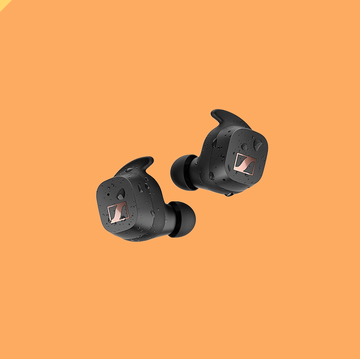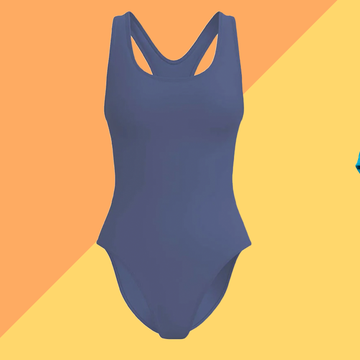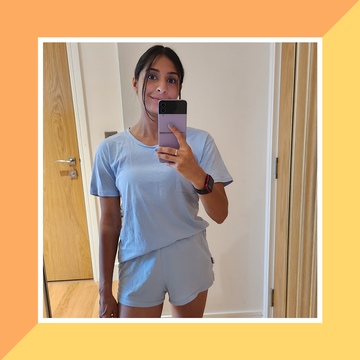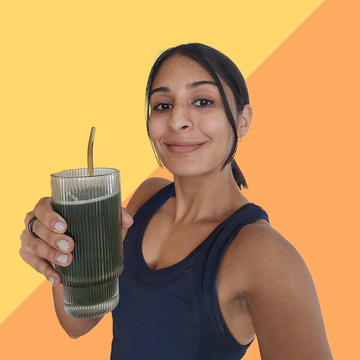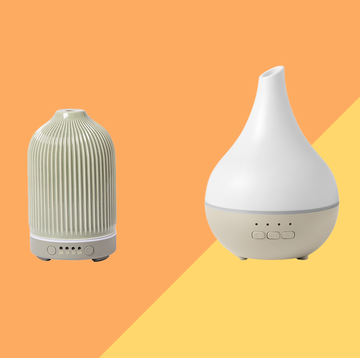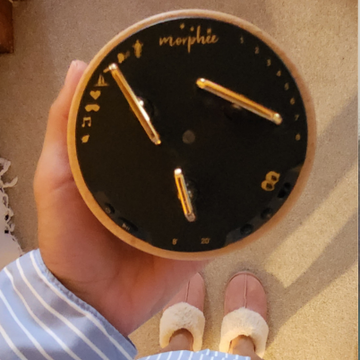You might think the most common symptoms of menopause are hot flushes, night sweats, vaginal dryness and possibly a drop in your sex drive. But actually, musculoskeletal (MSK) pain – pain affecting your joints, muscles and the tough bands of connective tissue that support them – is one of the most common, and most painful, complaints linked to the menopause.
A staggering 7 in 10 women will go through some sort of MSK symptoms, and 1 in 4 will be disabled by them. It’s so common that it has a dedicated name: musculoskeletal syndrome of menopause.
Musculoskeletal syndrome of menopause
MSK body aches are just as common in the perimenopause as after the menopause, although severe pain is more common when your periods have stopped completely. Why? It’s all down to oestrogen levels. In the perimenopause, your oestrogen levels fluctuate wildly; after the menopause, they drop significantly unless you’re taking HRT.
Tendons connect muscles to bones, and ligaments connect bones to each other. And since oestrogen plays a major role in keeping connective tissue, muscles, tendons and ligaments healthy and functioning efficiently, it’s hardly surprising that menopause and perimenopause can hit our joints, ligaments and tendons hard.
As if this wasn’t enough, animal studies show lack of oestrogen increases sensitivity to pain. And other human studies have found fluctuating oestrogen levels – which are common in the perimenopause – can increase the intensity of pain people feel.
So, which parts of the body are most commonly affected and what can you do about it?
Frozen shoulder
The medical name for frozen shoulder is adhesive capsulitis. It can be extremely painful and extremely disabling, and it happens when the tough connective tissue capsule that protects your shoulder joint becomes thickened and inflamed. While there’s no definitive proof that menopause causes it, it’s most common in your 40s and 50s and affects women more than men. Having diabetes, thyroid problems or a previous shoulder injury or surgery also increase your risk.
Then there’s the fact that oestrogen helps increase muscle mass and can affect the laxity of tendons and ligaments. Your shoulder is surrounded by muscles, ligaments and tendons that help keep it stable. Fluctuations in oestrogen in the perimenopause, and lower levels after the menopause, could make shoulders more vulnerable to inflammation.
There are three main phases:
- The ‘freezing’ phase (lasting 2-9 months), when your shoulder becomes painful and stiff. It can make doing up your bra or reaching out to fetch something agonising and commonly disturbs sleep.
- The frozen phase usually lasts 4-12 months. The pain improves but stiffness and reduced movement – particularly rotating your arm outwards – get worse.
- The thawing phase finally brings relief from both pain and stiffness, but can last 1-3 years.
Anti-inflammatory tablets, physiotherapy and shoulder exercises can all help. If they don’t do the trick, a steroid injection into your shoulder may relieve symptoms, but it isn’t a cure.
Foot ache
Plantar fasciitis is an inflammation of the tough connective tissue (fascia) of the sole of your foot (plantar). Your plantar fascia helps support the arch of your foot, as well as acting as a shock-absorber. As with frozen shoulder, peak age for plantar fasciitis coincides with the perimenopause and menopause.
Low or fluctuating levels of oestrogen and progesterone can affect the elasticity of the plantar fascia. Add this to the impact of oestrogen on collagen, which supports the structure and flexibility of fascia as well as skin, and it’s not surprising that repeated small trauma to the plantar fascia can result in inflammation.
Weight gain around the menopause is common, and you’re by no means alone if you’ve increased your exercise levels to counter it. But sudden increases in exercise, or exercising on a different surface (eg road instead of field jogging) increases the risk of plantar fasciitis. Along with rest, supportive footwear, heel pads, arch support, exercises to stretch your achilles (heel) tendon and anti-inflammatory medicines can all help. Steroid injections may be an option if these steps don’t help.
Hip pain
As you approach the menopause, you may assume hip pain is due to osteoarthritis, which does undoubtedly become more common with age. But your hip is far more than just a joint – the ball-and-socket joint is surrounded by muscles, tendons and ligaments. These provide stability and enable joint movement, but they can also cause pain and stiffness.
Your gluteal tendons connect your deep buttock muscles (gluteus medius and minimus) to your hip bone. They’re involved in lifting your legs to the side, squatting, getting up from sitting and stopping your pelvis dropping when you walk. And one of the commonest causes of hip pain around the menopause is a tendon problem called gluteal tendinopathy.
It’s caused by a problem with the tough collagen fibres that make up the band of tissue. As oestrogen levels drop, so does your body’s production of collagen, which is a primary building block of muscle, tendons, bones, ligaments and blood vessels, as well as your skin. This can make your tendons stiffer, which in turn can result in uneven pressure on glutes and hamstrings, as well as your shoulder rotator cuff tendons.
Physiotherapy is the most effective treatment. A physiotherapist can help you identify and avoid movements that compress and irritate the tendon as it passes over the outside of your hip.
How can I help myself?
- Hormone replacement therapy. Many of the aches and pains of menopause relate to hormonal changes. Most forms of HRT aren’t specifically licensed for aches and pains. However, they are indicated for ‘oestrogen deficiency symptoms’ in menopausal women. So if you’re menopausal or perimenopausal and getting other symptoms such as hot flushes or night sweats, it’s certainly worth having a discussion about the pros and cons with your doctor.
- Managing inflammation. Anti-inflammatory medicines such as ibuprofen can reduce both pain and inflammation in individual muscles, joints, tendons and ligaments. But they can cause stomach inflammation and kidney/heart problems if taken long term at high doses. Codeine-containing painkillers can be highly addictive, so proceed with caution.
- Hot and cold therapies. If you have acute inflammation in a muscle or joint, ice can reduce swelling and inflammation. Heat packs, by contrast, can help relax generally sore or stiff muscles.
- Look after your muscles. Getting enough dietary protein (lean meat, fish, dairy, beans, pulses, seeds, pulses, lentils etc) can provide you with plenty of amino acids, which are the building blocks of protein in your body.
- Eat for inflammation. The Mediterranean diet – high in green leafy vegetables, fruits, fatty fish, olive oil, almonds and walnuts, and low in ultra-processed foods and red meat – can reduce inflammation.
- Left, right, repeat. It may be tempting to rest if you’re aching, but exercise is crucial for maintaining flexibility, strength and healthy muscles. Weight-bearing exercise (any aerobic exercise except swimming and cycling) is great for bone as well as muscle strength. Once past the menopause, resistance exercises for individual muscles is important, too. But if you have pain in a particular region, do consult with a physiotherapist first to ensure any exercise won’t do more harm than good.
- Omega 3 supplements. Omega 3 has been found to help maintain muscle strength in menopausal women in the overweight category, especially when combined with strength training exercises.


